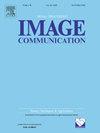Approximation-based energy-efficient cyber-secured image classification framework
IF 3.4
3区 工程技术
Q2 ENGINEERING, ELECTRICAL & ELECTRONIC
引用次数: 0
Abstract
In this work, an energy-efficient cyber-secured framework for deep learning-based image classification is proposed. This simultaneously addresses two major concerns in relevant applications, which are typically handled separately in the existing works. An image approximation-based data storage scheme to improve the efficiency of memory usage while reducing energy consumption at both the source and user ends is discussed. Also, the proposed framework mitigates the impacts of two different adversarial attacks, notably retaining performance. The experimental analysis signifies the academic and industrial importance of this work as it demonstrates reductions of 62.5% in energy consumption for image classification when accessing memory and in the effective memory sizes of both ends by the same amount. During the improvement of memory efficiency, the multi-scale structural similarity index measure (MS-SSIM) is found to be the optimum image quality assessment method among different similarity-based metrics for the image classification task with approximated images and an average image quality of 0.9449 in terms of MS-SSIM is maintained. Also, a comparative analysis of three different classifiers with different depths indicates that the proposed scheme maintains up to 90.17% of original classification accuracy under normal and cyber-attack scenarios, effectively defending against untargeted and targeted white-box adversarial attacks with varying parameters.
基于近似的节能网络安全图像分类框架
在这项工作中,提出了一种节能的基于深度学习的图像分类网络安全框架。这同时解决了相关应用程序中的两个主要问题,这两个问题通常在现有工作中分别处理。讨论了一种基于图像近似的数据存储方案,以提高内存使用效率,同时降低源端和用户端的能耗。此外,所提出的框架减轻了两种不同的对抗性攻击的影响,特别是保留了性能。实验分析表明了这项工作在学术和工业上的重要性,因为它证明了访问存储器时图像分类的能耗降低了62.5%,并且两端的有效存储器大小也降低了相同的量。在提高记忆效率的过程中,对于具有近似图像的图像分类任务,发现多尺度结构相似度指标(MS-SSIM)是不同相似度指标中最优的图像质量评价方法,并保持了MS-SSIM的平均图像质量为0.9449。对三种不同深度分类器的对比分析表明,在正常和网络攻击场景下,所提方案的分类准确率高达90.17%,能够有效防御不同参数的无目标和有目标白盒对抗性攻击。
本文章由计算机程序翻译,如有差异,请以英文原文为准。
求助全文
约1分钟内获得全文
求助全文
来源期刊

Signal Processing-Image Communication
工程技术-工程:电子与电气
CiteScore
8.40
自引率
2.90%
发文量
138
审稿时长
5.2 months
期刊介绍:
Signal Processing: Image Communication is an international journal for the development of the theory and practice of image communication. Its primary objectives are the following:
To present a forum for the advancement of theory and practice of image communication.
To stimulate cross-fertilization between areas similar in nature which have traditionally been separated, for example, various aspects of visual communications and information systems.
To contribute to a rapid information exchange between the industrial and academic environments.
The editorial policy and the technical content of the journal are the responsibility of the Editor-in-Chief, the Area Editors and the Advisory Editors. The Journal is self-supporting from subscription income and contains a minimum amount of advertisements. Advertisements are subject to the prior approval of the Editor-in-Chief. The journal welcomes contributions from every country in the world.
Signal Processing: Image Communication publishes articles relating to aspects of the design, implementation and use of image communication systems. The journal features original research work, tutorial and review articles, and accounts of practical developments.
Subjects of interest include image/video coding, 3D video representations and compression, 3D graphics and animation compression, HDTV and 3DTV systems, video adaptation, video over IP, peer-to-peer video networking, interactive visual communication, multi-user video conferencing, wireless video broadcasting and communication, visual surveillance, 2D and 3D image/video quality measures, pre/post processing, video restoration and super-resolution, multi-camera video analysis, motion analysis, content-based image/video indexing and retrieval, face and gesture processing, video synthesis, 2D and 3D image/video acquisition and display technologies, architectures for image/video processing and communication.
 求助内容:
求助内容: 应助结果提醒方式:
应助结果提醒方式:


